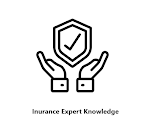Why Is a Workers' Compensation Audit Important?
A Workers' Compensation Audit NYS is essential for
several reasons. Firstly, it ensures that all employees are adequately covered
under the workers' compensation insurance policy, protecting them in the event
of workplace injuries. Secondly, it helps employers maintain accurate records and
avoid potential legal and financial penalties. Compliance with workers'
compensation laws fosters a safer work environment and demonstrates the
employer's commitment to employee well-being.
Preparing for a Workers' Compensation Audit in NYS
Gathering Necessary Documentation
Preparation is critical to a successful Workers'
Compensation Audit NYS. Gather all necessary documentation, including
payroll, tax filings, and employee classification records. Make sure all of
these documents are easily accessible and well-organized. Accurate and thorough
documentation will facilitate the audit process and help address any
discrepancies that may arise.
Reviewing Employee Classifications
Employee classifications play a crucial role in determining
workers' compensation premiums. Misclassification can lead to significant
discrepancies in your audit results. Review all job descriptions and ensure
employees are correctly classified according to their job duties. This step is
crucial for compliance and helps avoid unnecessary premium adjustments.
The Audit Process: What to Expect
Initial Notification
The audit process begins with an initial notification from
your insurance carrier. This notice will outline the audit's scope and
schedule. Responding promptly and preparing for the auditor's visit or, in some
cases, a remote audit is essential. Understanding the audit's requirements and
timeline will help you plan accordingly.
Conducting the Audit
The auditor will review your payroll records, employee
classifications, and other relevant documentation during the audit. They may
also ask for additional information or clarification on certain aspects of your
records. Be prepared to provide detailed explanations and supporting documents
as needed. Transparency and cooperation during the audit can facilitate a
smoother process.
Post-Audit Review
After the audit, the auditor will compile their findings and
present a summary report. This report will detail any discrepancies,
adjustments, or recommendations for compliance. Take a close look at the report
and deal with any problems immediately. If there are significant adjustments to
your workers' compensation premiums, ensure that your records are updated
accordingly.
Common Issues and How to Avoid Them
Misclassification of Employees
One of the most common issues in a Workers' Compensation
Audit NYS is employee misclassification. This can occur when employees are
incorrectly categorized into job classifications that do not accurately reflect
their duties. To avoid this issue, regularly review job descriptions and
classifications and consult your insurance provider if you have any questions.
Incomplete Payroll Records
Inconsistencies can only arise from incomplete or inaccurate
payroll records throughout the audit. Ensure that all payroll records are
complete, correct, and up-to-date. This includes maintaining detailed wages,
overtime, bonuses, and other compensation records. Regular audits of your
payroll records can help identify and correct any inaccuracies before the
official audit.
Benefits of a Successful Workers' Compensation Audit
Ensuring Compliance
A successful Workers' Compensation Audit NYS ensures
that your business complies with state regulations, reducing the risk of legal
and financial penalties. Compliance demonstrates your commitment to providing
employees with a safe and secure work environment.
Financial Accuracy
Accurate reporting and classification during the audit help
ensure that your workers' compensation premiums are correctly calculated. This
can prevent overpayments and ensure you are not underpaying for your coverage,
which could lead to significant adjustments later.
Improved Safety Practices
The audit process can also highlight areas where safety
practices can be improved. Addressing these issues can create a safer
workplace, reduce the risk of injuries, and lower workers' compensation
premiums.
Tips for a Smooth Workers' Compensation Audit NYS
Stay Organized
Keeping your records organized and up-to-date is crucial for
a smooth audit process. Regularly review and update your payroll records,
employee classifications, and other relevant documentation. This will ensure
that you are always prepared for an audit and can quickly address any issues.
Seek Professional Assistance
Consider seeking professional assistance if you need
clarification on any aspect of the Workers' Compensation Audit NYS process.
An experienced consultant or accountant can help you prepare for the audit,
review your records, and ensure you comply with all regulations. Their
expertise can be invaluable in navigating the complexities of the audit
process.
Maintain Open Communication
Keep lines of communication open with the auditor at all
times. Respond promptly to their requests for information and provide any
necessary documentation. Clear and transparent communication can help resolve
issues quickly and facilitate a smoother audit.
Conclusion
Navigating a Workers' Compensation Audit in New York State
can be complex and challenging. Still, proper preparation and understanding can
also be valuable in ensuring compliance, improving safety practices, and
accurately managing workers' compensation premiums. By following the steps
outlined in this guide and addressing common issues proactively, you can
achieve a successful audit and maintain a safe and compliant workplace.

